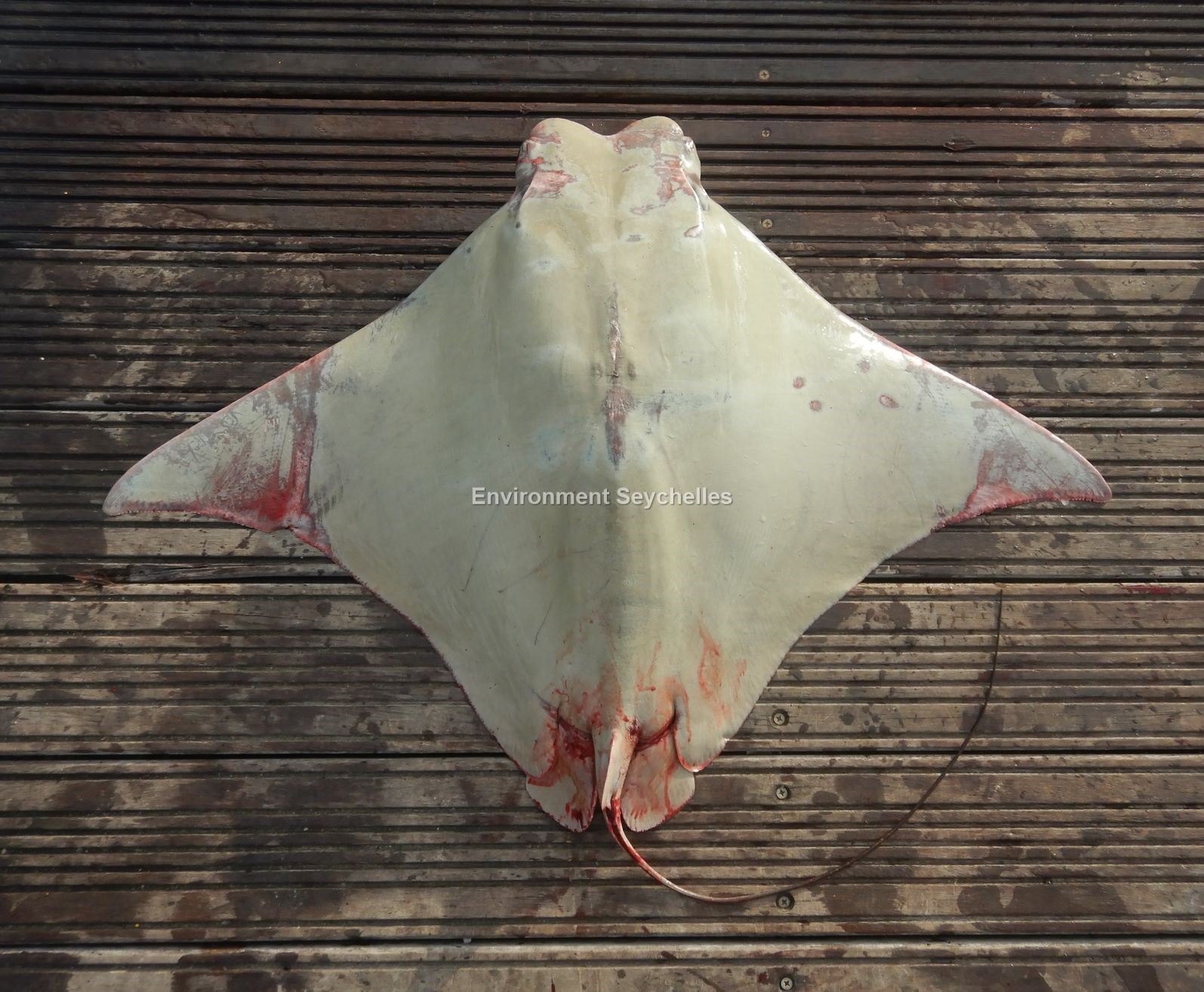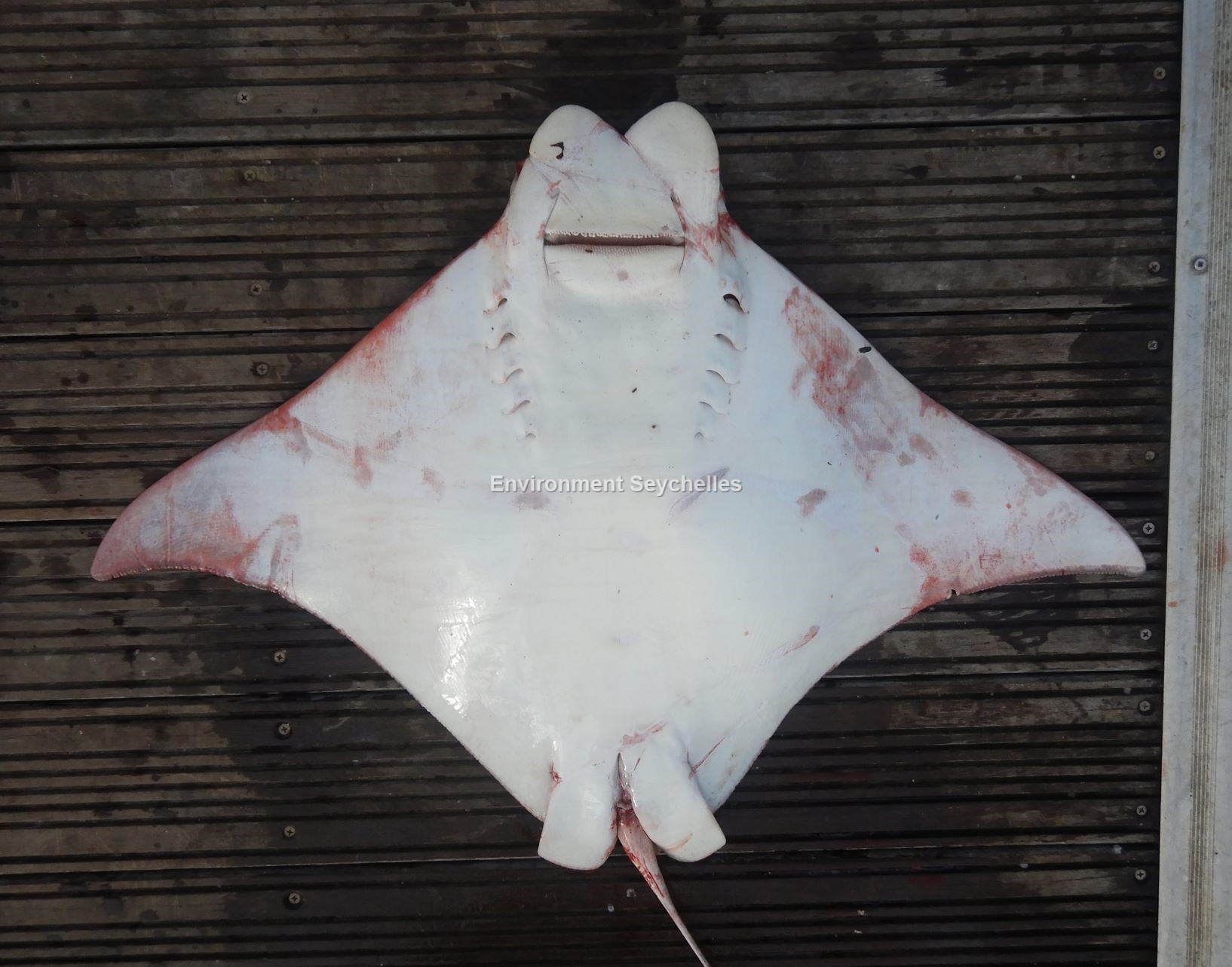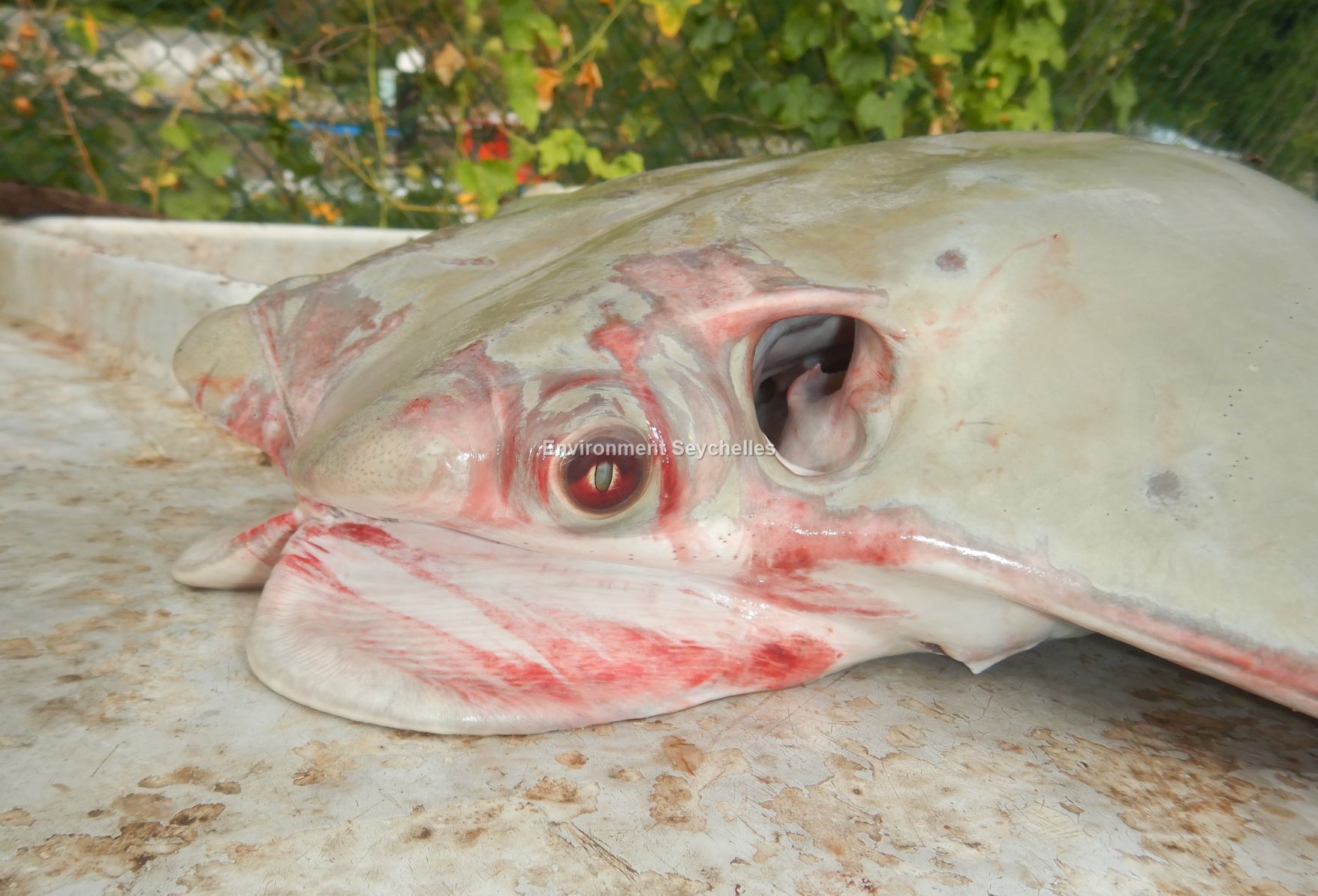Description:
Stocky cownose ray with rhombus-shaped disc and short whip-like tail. Head large, snout tip deeply notched giving distinctive bilobed, bulbous appearance.
Cephalic lobes long, posterior edge usually extending past mouth almost to first gill slit. Spiracles much larger than exposed eye, situated slightly
behind pectoral-fin origins. Plate-like teeth, 9-11 rows in each jaw; 3 middle rows much broader than those laterally. Disc broad and long, anterior
margin notched behind eye. Denticles in weak band on disc mid-line. Pectoral-fin tips narrowly angular. Dorsal fin positioned well forward near pectoral-
fin insertions. Caudal sting short (often detached), usually slightly longer than dorsal-fin base, its origin beneath dorsal-fin inner margin.
Colour. Disc uniform dark brown, or greyish to bluish grey above, often paler on snout. Ventral surface white, usually with narrow black edge
along pectoral fins.
Size:
Maturity: Unknown, range ? - 78 cm. Max length : 90.0 cm DW (disc width).
Habitat and Ecology:
Benthopelagic over the continental shelf, mostly inshore (depth 0-50 m). Reproduction is viviparous with one pup per litter, unknown if reproductive
periodicity is annual or biennial.
Fishery Status:
This species is not protected or subject to fishery regulations.(See notes for further info).
Notes:
This species was recorded in Seychelles in the 1950s by Smith & Smith (1963) under the then classification of Rhinoptera javanica (subsequently divided
into R. jayakari and R. javanica) there do not appear to be any other records of this species until the photo'd specimen which was caught (27/05/23).
Experienced elasmobranch fishermen questioned, with a combined fishery expereince of 150+ years dating back to the early 1970s, had not previously seen
the species, indicating it is very rare (or perhaps a vagrant?) on the Mahe plateau.
Last et al. (2016) state that R. jayakari "may consist of 2 closely related species in the Indo-pacific based on recent genetic findings. The forms
possibly differ in the shape of the head and tail, and robustness of their bodies."
References:
Dudley, S.F.J. et al. (2006). Rhinoptera javanica. The IUCN Red List 2006: http://dx.doi.org/10.2305/IUCN.UK.2006.RLTS.T60129A12310446.en (27/05/23).
Froese, R. & D. Pauly. (Eds.) (2023). FishBase. Rhinoptera jayakari. https://www.fishbase.se/summary/Rhinoptera-jayakari.html (27/05/23).
Last, P.R. et al (2016). Rays of the World. CSIRO Publishing ISBN 9781501705328
Sherman, C.S. et al. (2021). Rhinoptera jayakari. The IUCN Red List 2021: https://dx.doi.org/10.2305/IUCN.UK.2021-2.RLTS.T195474A175221403.en. (27/05/23).
Smith, J.L.B. & Smith, M.M. (1963). The Fishes of Seychelles. Department of Ichthyology. Rhodes University. Grahamstown.
Citation:
Nevill, J.E.G. & Bamboche, Y. (2023). Rhinoptera jayakari, Oman cownose ray. Seychelles Seatizens. www.seatizens.sc. https://seatizens.sc/species/rhinoptera-jayakari-boulenger-1895/




There are no comments